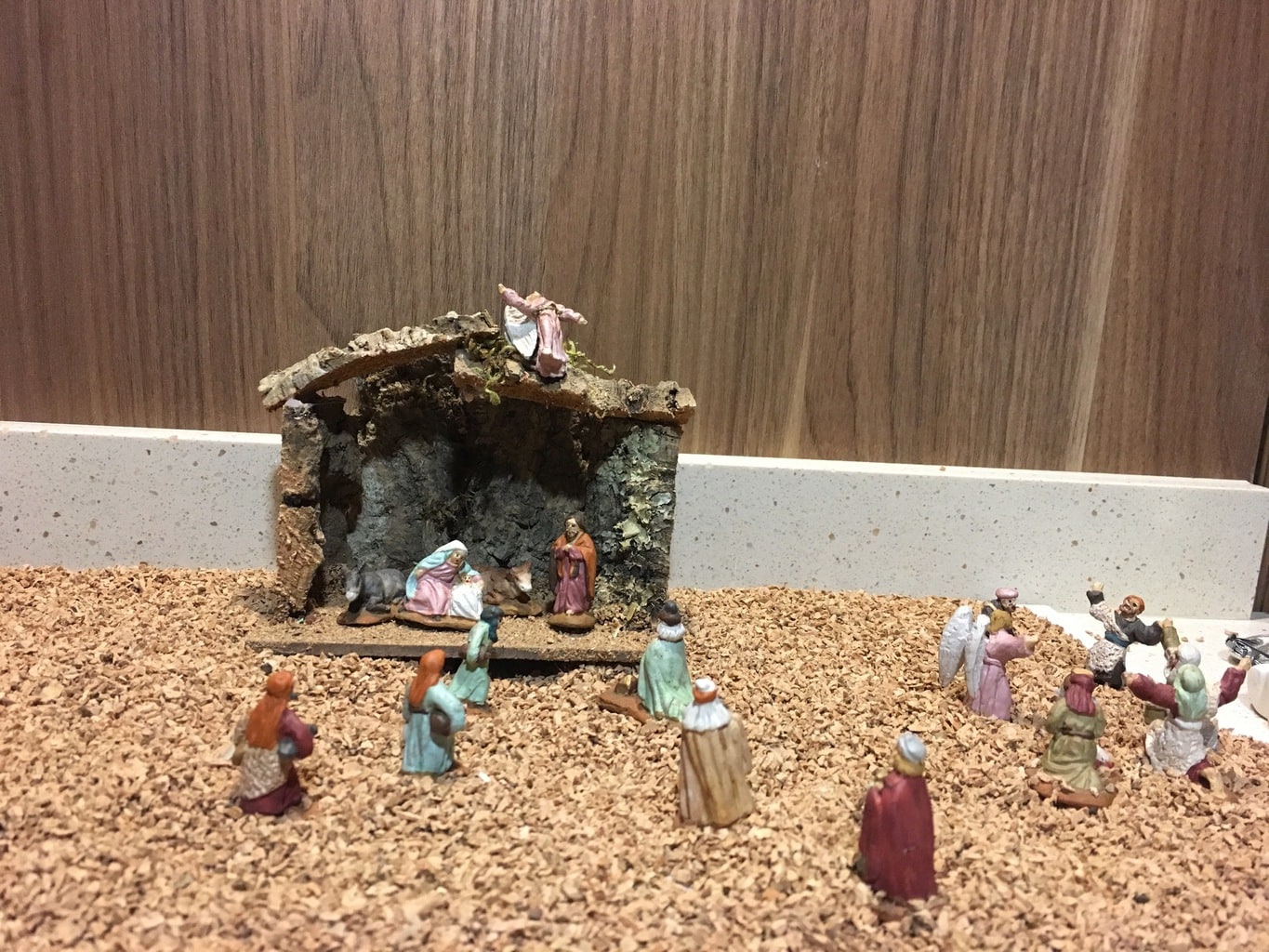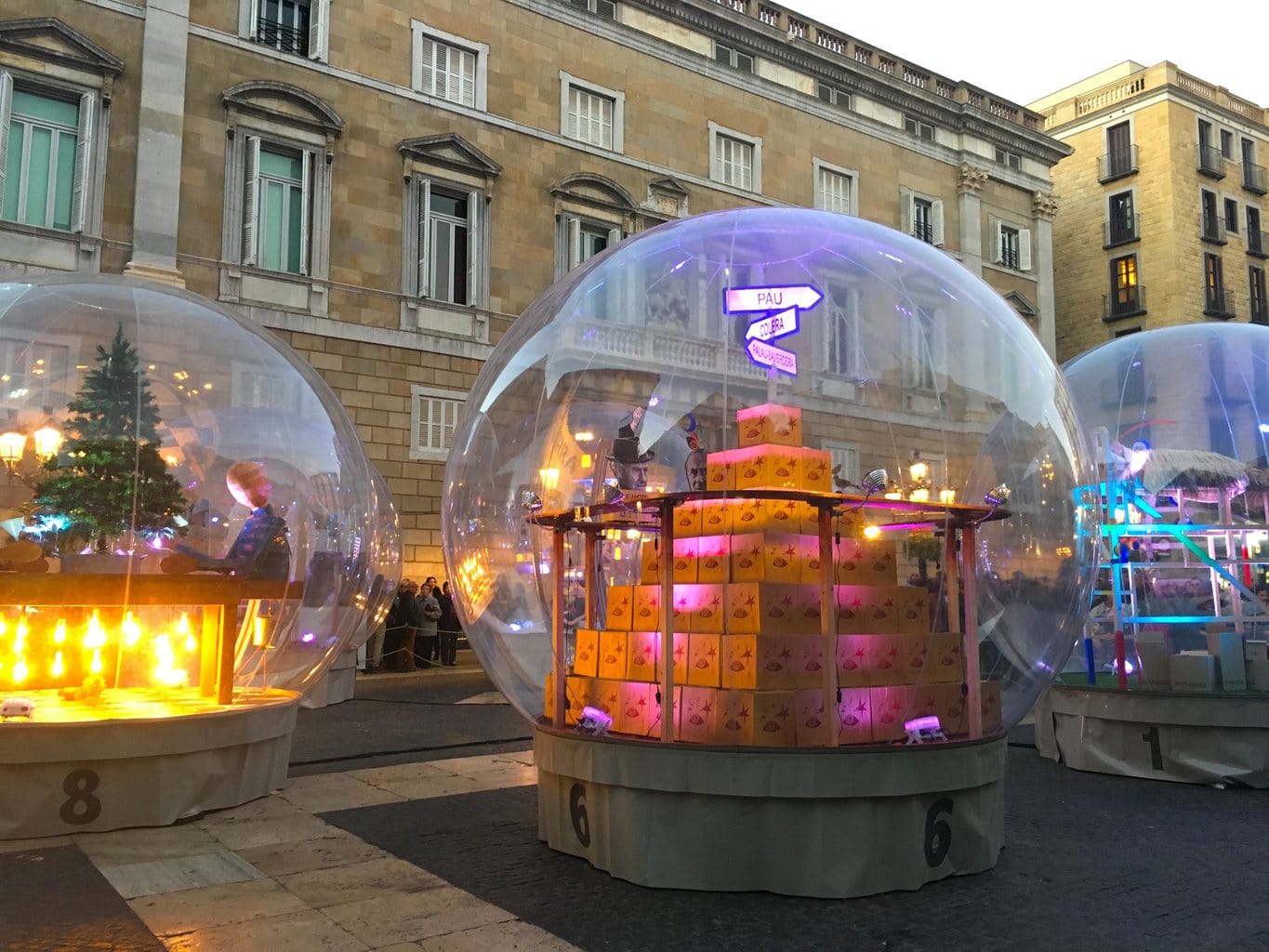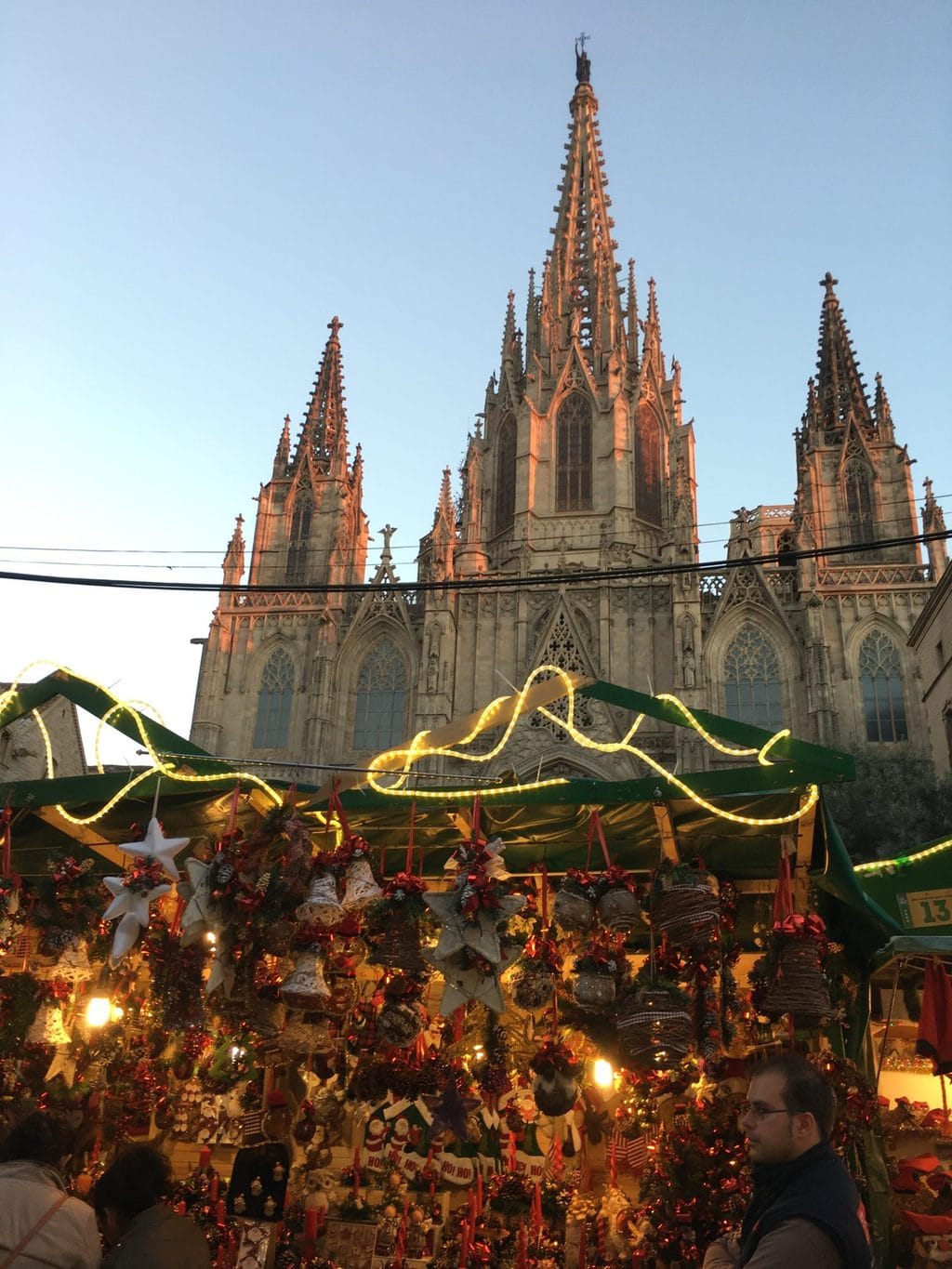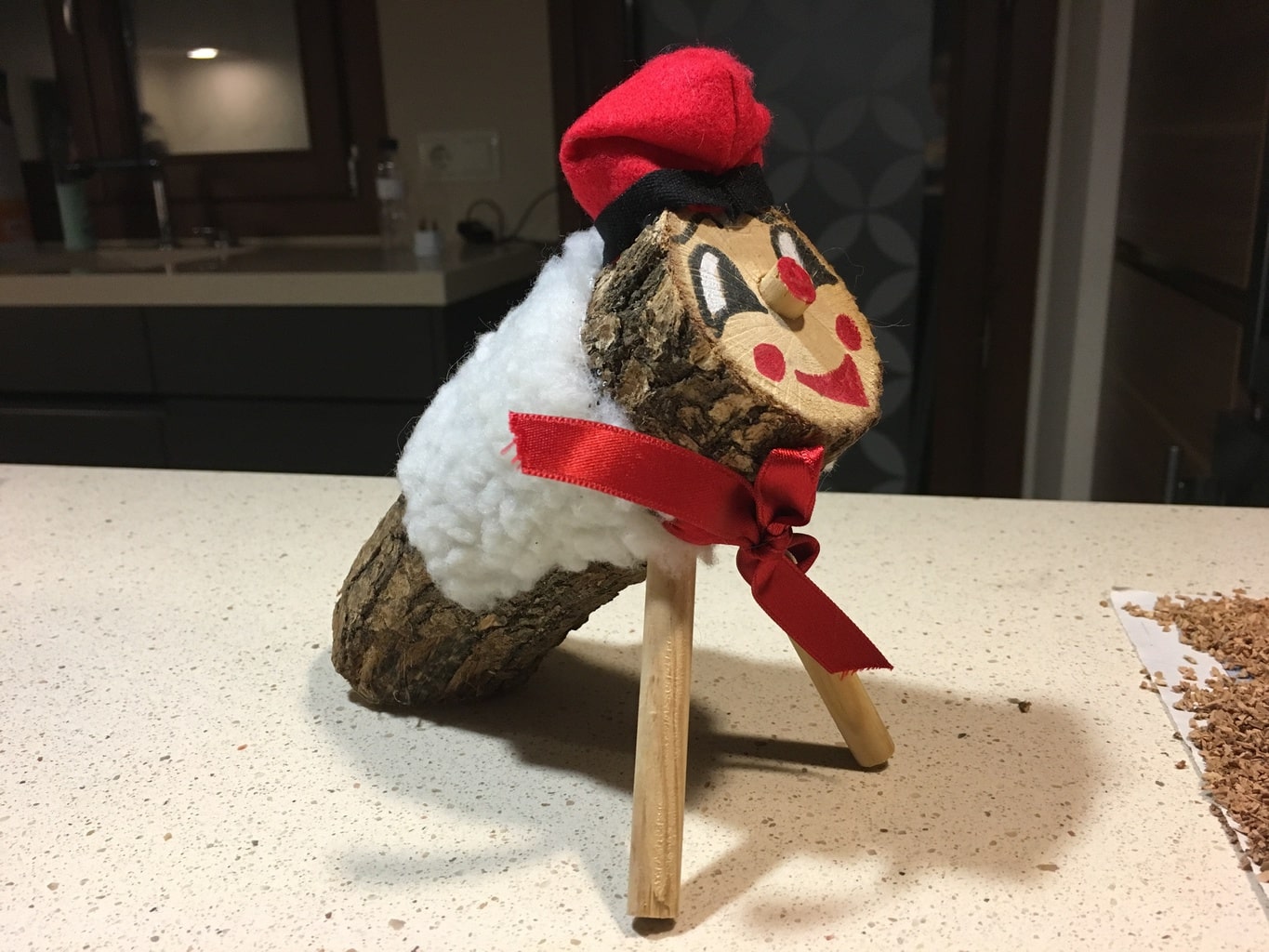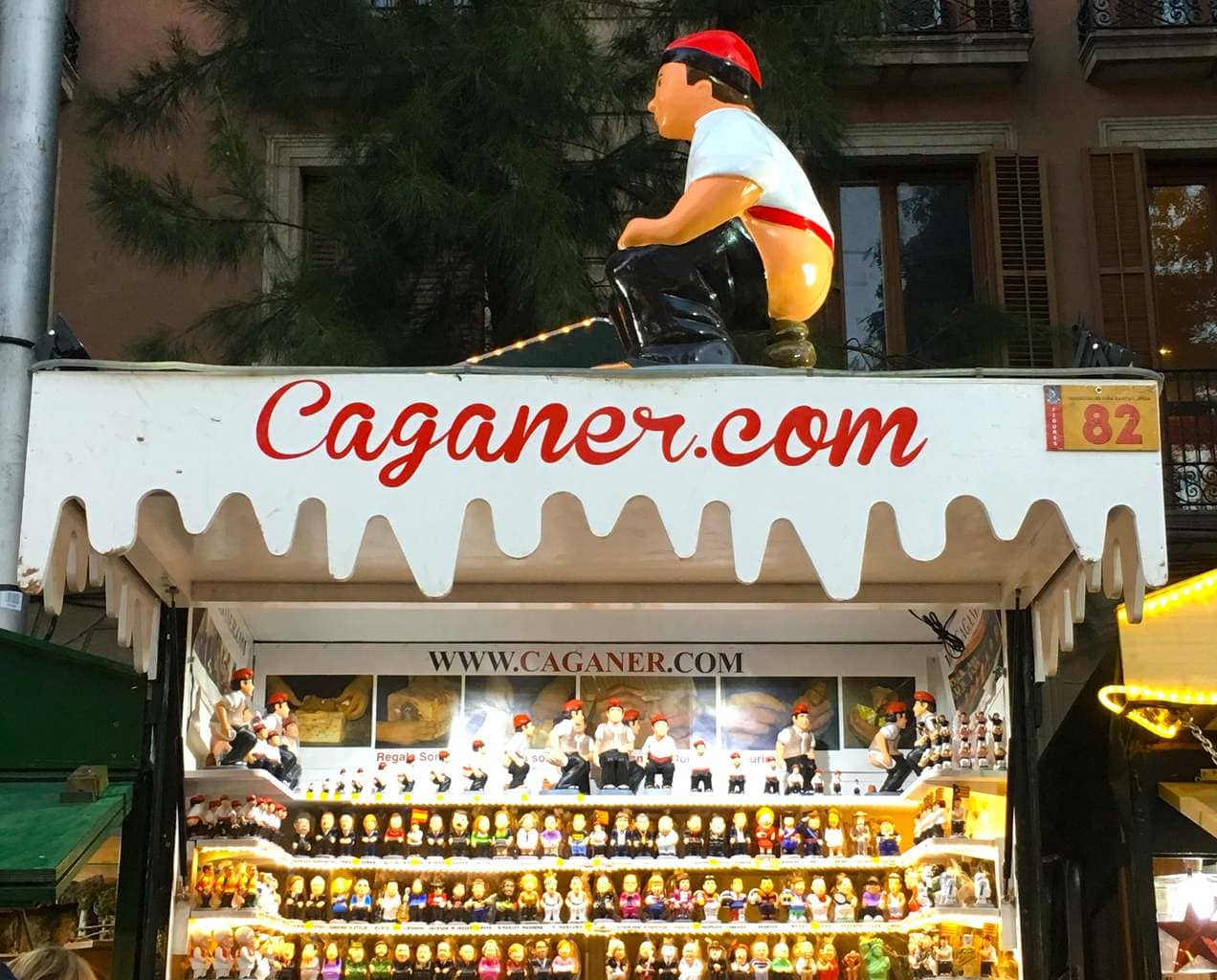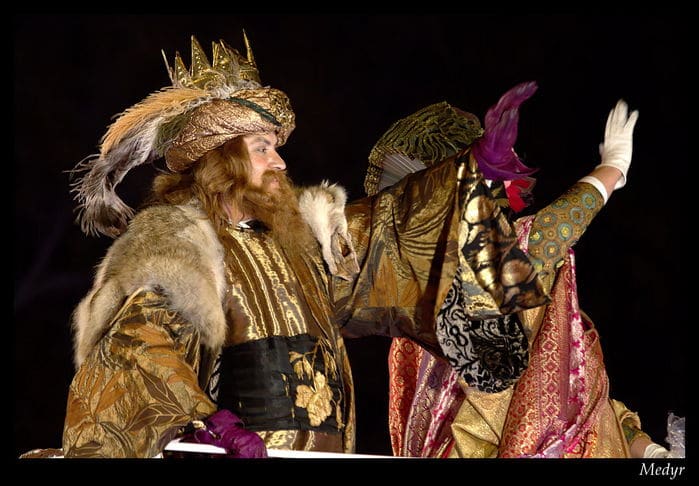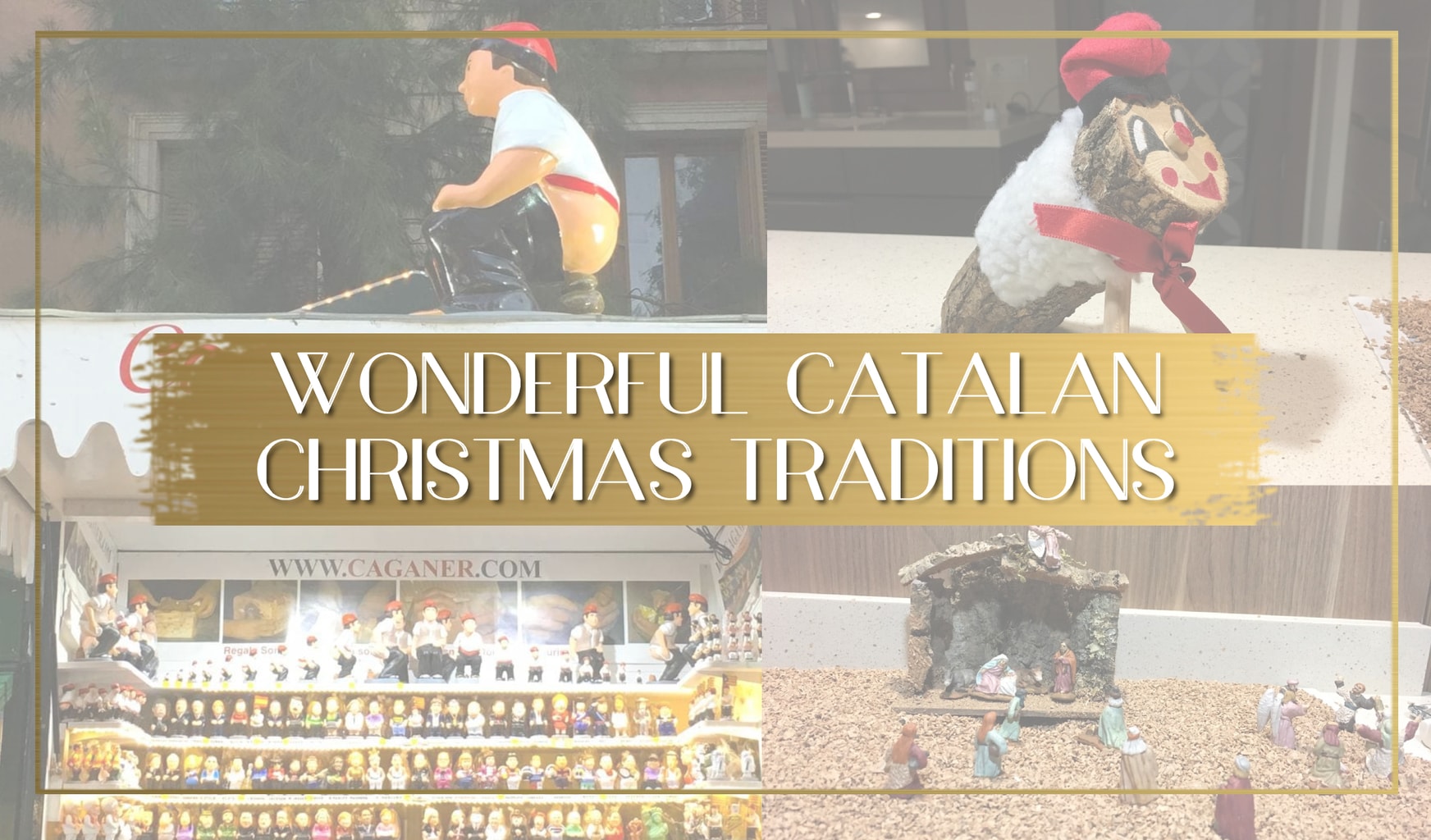
Every time I explain our Catalan Christmas traditions I get “the look”.
“What do you mean you buy and place pooping figurines dressed with the traditional Catalan hat on Nativities?”
You heard right.
The Catalan Christmas is like no other. It’s filled with both religious and pagan traditions that are unique to our culture.
Have you ever hit a log with a stick until it pooped gifts? What about building the most intricate nativity scenes that include flowing rivers? And no, there are no Three Wise Men here, only the Three Kings of the Orient. They disembark from a ship and ride camels into Barcelona and other towns. Watch them riding around from one of these rooftop terraces in Barcelona.
Not weird enough for you?
Well, we don’t exchange gifts on Christmas day. And we eat a cake on Epiphany day with a fava bean hiding inside. If you eat the bean, you pay for the cake!
We are very prosaic and practical in Catalonia. Unlike in the rest of Spain, where Easter celebrations are important and unique, in Catalonia we go big for Christmas. So let me give you the low down on the strangest Catalan Christmas traditions you have ever heard.
Bonus Barcelona Guide
Check out my detailed guide on Where to stay in Barcelona with details on each neighbourhood and best hotel recommendations – Psst I am a local to the city! Then read my article on a 4 day itinerary to Barcelona, my guide to one day in Barcelona, this travel guide to Sitges near Barcelona, my complete guide to Sagrada Familia, the best wineries near Barcelona, and my ultimate and complete travel guide to Barcelona.
Catalan Christmas tradition no1: Building nativities or Pessebre
As a kid, building your own Pessebre or Nativity was a super cool and fun activity to do. Kind of like building a Lego village, but easier.
The name “Pessebre” is the Catalan word for manger, where Jesus Christ was placed after birth. Nativities scenes can be as simple as just depicting the Birth of Jesus. They can also be ridiculously overcomplicated, displaying several entire scenes from the Bible, from the Birth of Jesus to the Three Kings of the Orient bringing gifts. Some even show the Star of Bethlehem or the Archangel Gabriel announcing the birth of Jesus.
Nowadays, you can just purchase pre-made small nativities with all the elements, so you don’t need to do the work. But traditionally, you build it from scratch, only the figurines are bought and usually made of clay.
To make it, you can use natural components found in nature like moss, wood, tree branches, etc. As I lived in the countryside, we would go to the forest to get all the elements and then build a 2m x 1m Pessebre that had it all – from flowing rivers with a windmill to the most intricate villages.
Every day we would advance the Three Kings of the Orient, the rest of the figurines did not move, until they reached Jesus on Epiphany day, the 6th of January.
Pessebres are not a modern thing, but a Catalan Christmas tradition that is rooted in centuries of history.
The first known nativity was found in Germany, at the Fusen Monastery and dates at the 3rd Century BC. Pessebres spread fast as a Catalan tradition from the 14th century onwards. By the 18th century, the Santa Llucia Christmas Market in Barcelona already sold all the elements and figurines to make your own. The market is still open and sells the same things it used to 300 years ago.
But Pessebres are more than just static figurines on a background, they also come to life, just like in the theatre.
The first live Pessebre was recorded in the 13th century and was done by Saint Francis of Assisi. As a kid, this was also something that was a lot of fun. The actors from the village would dress up as each character in the birth of Jesus and act scenes from the Bible that led up to the birth – all in a real life setting.
As we lived in the countryside, the Pessebre Vivent (Live Nativity) was even held at our house one year. The representation is done over several days and you can act out as many scenes as you like. This is not something you will be able to see in Barcelona but more in the smaller towns.
Barcelona does however have a tradition of putting up a different version of the Pessebre every year in front of the Town Hall, as well as in front of the Catalan Government building in the center of the Gothic Quarter.
Some years the Pessebre is more traditional, on others like in 2016, it is a far fetched and very futuristic representation that include verses of a an original poem that represents the Birth of Jesus, from a Catalan writer.
The Federacio Catalan de Pessebristes is a foundation in charge of preserving and furthering this tradition where you can find the schedule of all the Pessebres in Catalonia. Sadly the page is only in Catalan or Spanish.
Bonus Barcelona 4 Day Itinerary: Check out my day-by-day itinerary for 4 Days in Barcelona. I’ll tell you all my secret places to go and best times to visit the more well known areas.
Catalan Christmas tradition no2: The pooping log or Caga Tio
On the 8th of December, kids from all over Catalonia either scavenge for or buy a pine tree log which they keep at home.
They keep it warm and “feed” it until Christmas Eve. The log usually has a face painted on it, with a big smile, and wears a red “barretina” a French style hat that is the traditional Catalan hat since the Medieval times.
Every day, the kids will “feed” the log in the hope that, with a full stomach and, ahem, intestines, it will poop them lots of gifts. The log is kept warm with a blanket and parents will make sure the food left in front of it disappears every day. On the 24th December, the log comes out to poop.
The event is quite an interesting one.
Kids will get a stick and go to another room to wet the stick with water. In the meantime, in the other room, parents place gifts under the log’s blanket. Then, when the kids come back, they hit the log while singing:
“Caga tio, sino et donare basto.
No caguis arangades que son massa salades,
caga turrons,
que son mes bons”
This roughly translates to “Poop log! Or else I will hit you with this stick. Don’t poop herring because it is too salty, poop turrons (traditional Spanish Christmas almond and sugar dessert) because they are sweeter”.
Of course every family has its own song based around the same premise, this was mine.
How’s that for an amazing Catalan Christmas tradition?
I bet I left you speechless.
Eventually the log runs out of gifts and when the blanket is raised there is nothing else.
But what if you’ve been naughty?
Caga Tio may poop a herring, a piece of charcoal, an onion or a garlic clove.
The Caga Tio is Catalan’s equivalent to Santa Claus as gifts in Spain are only exchanged on Epiphany Day, on the 6th January.
Catalan Christmas tradition no3: The shitter, crapper or Caganer
If the pooping log wasn’t scatological and funky enough, then hear about “El caganer” literally translated as the “shitter” or “crapper”.
This is a pagan tradition believed to have evolved from fertility and prosperity.
El Caganer is a small figurine that is usually placed on Nativities around Catalonia for some added fun.
This figurine started to officially appear on most nativities in the 17th century and was widely spread by the 19th century. Usually, he is a peasant and wears the traditional Catalan attire: espadrilles, black trousers, white shirt, red hat and belt.
The origin of the word and the figurine is disputed but it is believed to be the result of a figurine manufacturer with a good sense of humour.
Traditionally, when families would build the Pessebre, there would be a time when someone would ask if “El Caganer” had already been added. This referred to baby Jesus who, like any baby, basically just ate, slept and pooped.
From then on, some figurine maker probably thought it would be funny to create a pooping figurine to mock one of the villagers in his town and the tradition stuck. Because el Caganer is fertilising the soil, it is believed to be a symbol of prosperity and good luck for the coming year.
Today, Caganers are added for fun and are made to resemble the caricatures of politicians, football players, personalities or celebrities, from Obama to the Dalai Lama!
Remember that this is all in good fun and is not malicious.
Catalan Christmas tradition no4: The Three Kings of the Orient or The Three Wise Men
Before I left Spain almost 15 year ago, Santa Claus had never made it all the way down to the Southern part of Europe.
In fact, Santa Claus is a relatively new and strange tradition in Spain as we don’t exchange gifts until 6th of January.
Why?
Because this is when The Three Kings of the Orient (better known as The Three Wise Men) bring them.
This tradition comes from the Book of Matthew in the Bible where three men brought gifts for baby Jesus when he was born in the manger.
The three men were originally known as magicians or astrologers, from the Greek term. They were later known as wise men and eventually as Kings, which is how we know them in Spain.
The Three Kings found their way to baby Jesus by following the Christmas Star, which is a feature in most nativities and representations of the birth of Jesus in Spain. The star is usually placed on top of the stable.
Much like Santa Claus, The Three Kings arrive on the 5th at night and will leave presents for the kids that have behaved well. If you have been bad, you will get sugared charcoal.
Kids will leave three glasses of cava and Christmas sweets for the Kings and water for their camels, I mean, they come from the Orient after all. A shoe from each family member is left, so that the Kings know who lives there.
As a kid, we would go to see the “Kings’ helper” to deliver a letter with our requests and take a photo, just like with Santa.
As a curiosity, the Three Kings are Melchor, Gaspar and Baltasar and are white, blond and black as they were believed to come from Europe, Asia and Africa.
They brought gold, incense and myrrh respectively, according to the Bible. These gifts were not random though.
Gold represents power and royalty as only Kings could own it. Incense is used in religious ceremonies and myrrh is red, to symbolise blood and humanity. Thus, Jesus was recognised as King, God and Saviour of Humanity.
In Barcelona, The Three Kings arrive every year on the 5th of January, the night before. They parade around the city riding camels and throwing sweets to the kids who come and see them, a show to behold.
This is a Catalan Christmas tradition that is also done in many smaller cities and towns. I never understood why kids from all over don’t put two and two together and realise that The Three Kings are not real. But then again, Christmas is the time of the year when we all believe in magic.
Bonus Perfect Day Trips from Barcelona
So you’ve spent the week in Barcelona and you want to see what else there is in the region. Fret not, and check out my ideas for day trips from Barcelona.
- Check if you need a visa, get help processing it at iVisa.
- Never ever leave without travel insurance. Get affordable coverage from World Nomads or long term insurance from Safety Wing.
- I find all of my flights on KAYAK. Check their Deals section too.
- Search for all your transportation between destinations on the trusted travel booking platform Bookaway.
- I book all my day trips and tours via GetYourGuide, they are the best and their tours are refundable up to 24h in advance.
- Get USD35 off your first booking with Airbnb.
- Compare hotels EVERYWHERE at HotelsCombined and book with Booking.com.
- Compare car rental prices at Rentalcars.com

